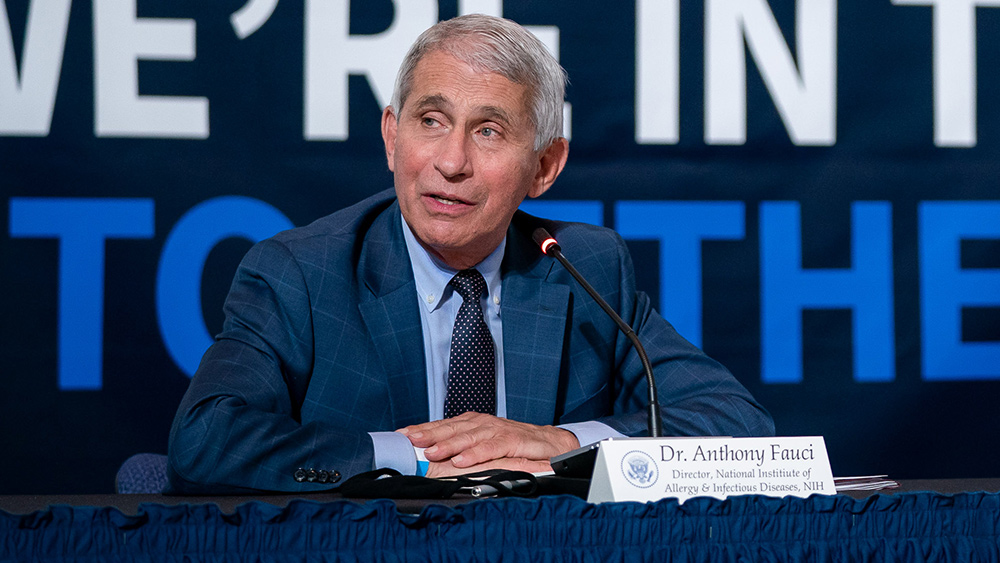Indians share their stories amid the country’s second wave of coronavirus infections
05/12/2021 / By Ramon Tomey

A second wave of Wuhan coronavirus infections has battered India and crippled its healthcare system. Citizens have pointed their fingers at Prime Minister Narendra Modi and his government for the deluge of new cases. According to critics, Modi and his officials exacerbated the pandemic by failing to prepare for a potential second wave.
Editor’s note: The “second wave” is really the post-vaccine explosion in cases, caused by the vaccines as a depopulation weapon. India is the world’s second most populist nation and is being targeted for sharp population reductions. While the fake news media blames the second wave on covid, the real cause is covid vaccines. There are at least 17 countries where “covid deaths” have spiked followed covid vaccines.
Indians from all walks of life have borne the brunt of the latest wave of infections. Financial Times talked to four people confronting the crisis in India to learn more about their stories.
Aparna Hegde, doctor
Mumbai doctor Aparna Hegde works at the Cama & Albless Hospital for women and children. She told FT that during the first wave of infections in 2020, the facility only had 60 patients at a time. This shot up to 100 patients when the second wave hit. Due to the influx of COVID-19 cases, she was unable to secure a hospital bed and oxygen cylinder for a younger colleague – who later passed away. “That young man should not have died,” Hegde lamented.
According to the doctor, the strain on hospitals revealed a lack of preparation and chronic neglect of public healthcare. It has also affected other spheres of public health, which all efforts directed toward addressing Wuhan coronavirus infections at the cost of other programs. Hegde commented: “We don’t learn from our mistakes at all. The first wave ended and we didn’t think that a second wave could come.”
Vishwanath Chaudhary, chief cremator
Vishwanath Chaudhary is the head of the Dom caste, which has been in charge of the cremation grounds at Varanasi for generations. The city in India’s Uttar Pradesh state lies on the banks of the Ganges River, which many Hindus consider as holy. Thus, many Hindus wish to be cremated in Varanasi so their souls are liberated from the cycle of reincarnation.
However, the influx of bodies – as many as 100 per day – has made the heat from the non-stop cremations unbearable. It have also caused shortages of wood for the cremation pyres, prompting vendors to jack up prices. The 39-year-old remarked: “Our family has been traditionally involved in managing the crematoriums for generations. No one has ever seen anything like this. The situation is horrific.” (Related: Coronavirus cremations in India suggest death count possibly 10 times higher.)
Ram Vilas Gupta, migrant worker and former taxi driver
Ram Vilas Gupta left his family in the town of Chandauli, also in Uttar Pradesh state, more than 15 years ago. He found work in Mumbai driving a taxi and stayed with others in a five-person room. India’s nationwide lockdown forced Gupta to return to his hometown with zero savings. He borrowed 40,000 Indian rupees (US$540) to get by. Gupta went back to Mumbai when things improved, bringing in pre-pandemic monthly earnings of up to 18,000 Indian rupees (US$243.)
But his luck would eventually run out as the second wave of infections hit the city. Gupta’s earnings dried up when taxi customers stopped hailing rides, prompting a return to Chandauli. The jobless Gupta is now worrying about how to repay his debt. “All my savings [are gone]. We had a very difficult time,” he told FT. But more than repaying his loan, he fears that the infections will reach his village – where many are still skeptical of its existence. “Some people [in my village] say there is no [coronavirus]. But I am very afraid,” he commented.
Sourindra Bhattacharjee, university professor
Indians in the middle and upper classes typically enjoy access to top-notch healthcare. Meanwhile, poor Indians depend on government hospitals that receive insufficient funding. But the recent wave of coronavirus infections leveled the playing field, with both rich and poor scrambling to obtain medical treatment. Business professor Sourindra Bhattacharjee experienced this firsthand as he tried and failed to find a hospital bed for a relative.
When his elder sister Gouri’s blood oxygen levels dropped to below 80 percent, Sourindra immediately talked to doctors. They advised him to get her to a hospital, but the effort was in vain as hospitals in Delhi were already at full occupancy. He brought her sister home instead to recover. Sourindra found an oxygen cylinder for Gouri but did not have the equipment needed to use it on her. Despite these setbacks, Sourindra told FT: “She seems to be on the mend. God has been kind to me.” (Related: Indian hospitals are running out of oxygen that’s needed to keep coronavirus patients alive.)
The stories of the four provide a glimpse of the Wuhan coronavirus’s impact on the south Asian country. According to a CNBC report, India closed off April with a record high of 386,452 new COVID-19 cases on April 30. The figures followed a consistent streak of more than 300,000 case counts in days prior.
Data from Johns Hopkins University shows that India currently has a 20.6 million COVID-19 caseload with 17 million recoveries and 226,188 deaths.
Visit Pandemic.news to read more about the impact of the second COVID-19 wave on India.
Sources include:
Tagged Under: Aparna Hegde, coronavirus infections, covid-19 pandemic, Financial Times, India, infection surge, Ram Vilas Gupta, second wave, Sourindra Bhattacharjee, Vishwanath Chaudhary, Wuhan coronavirus
RECENT NEWS & ARTICLES
COPYRIGHT © 2017 SUPER BUGS NEWS





















